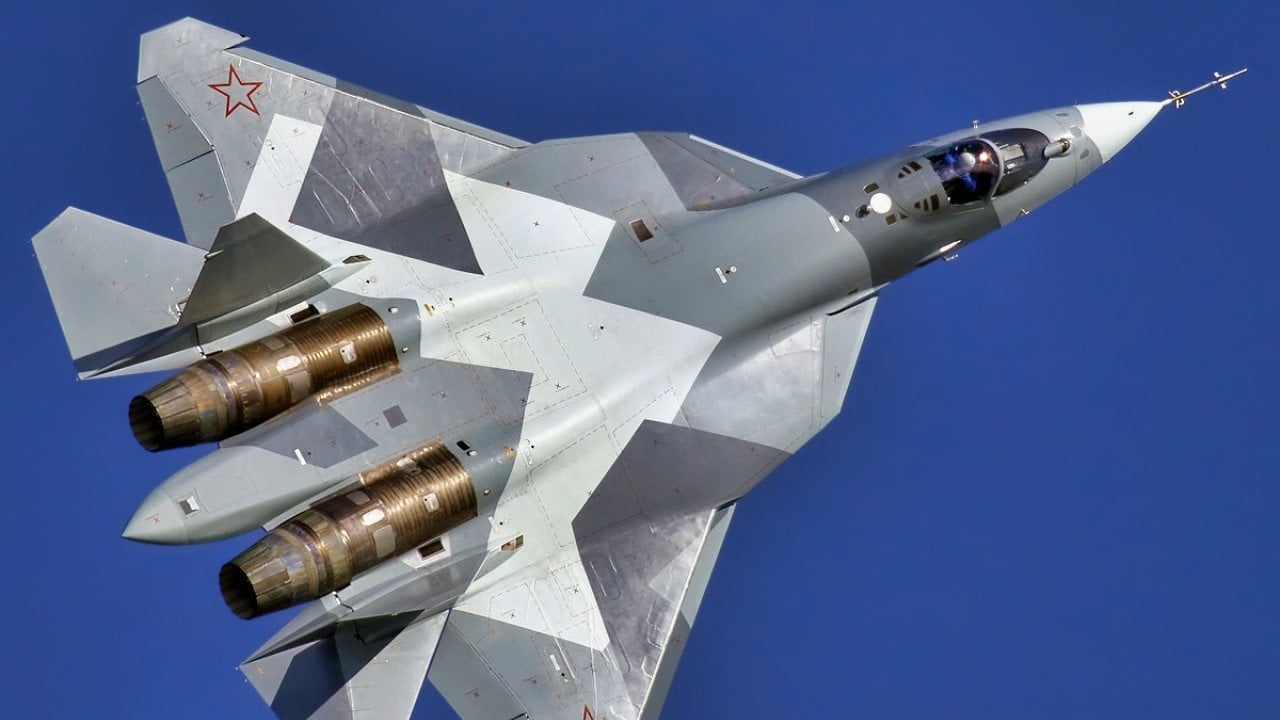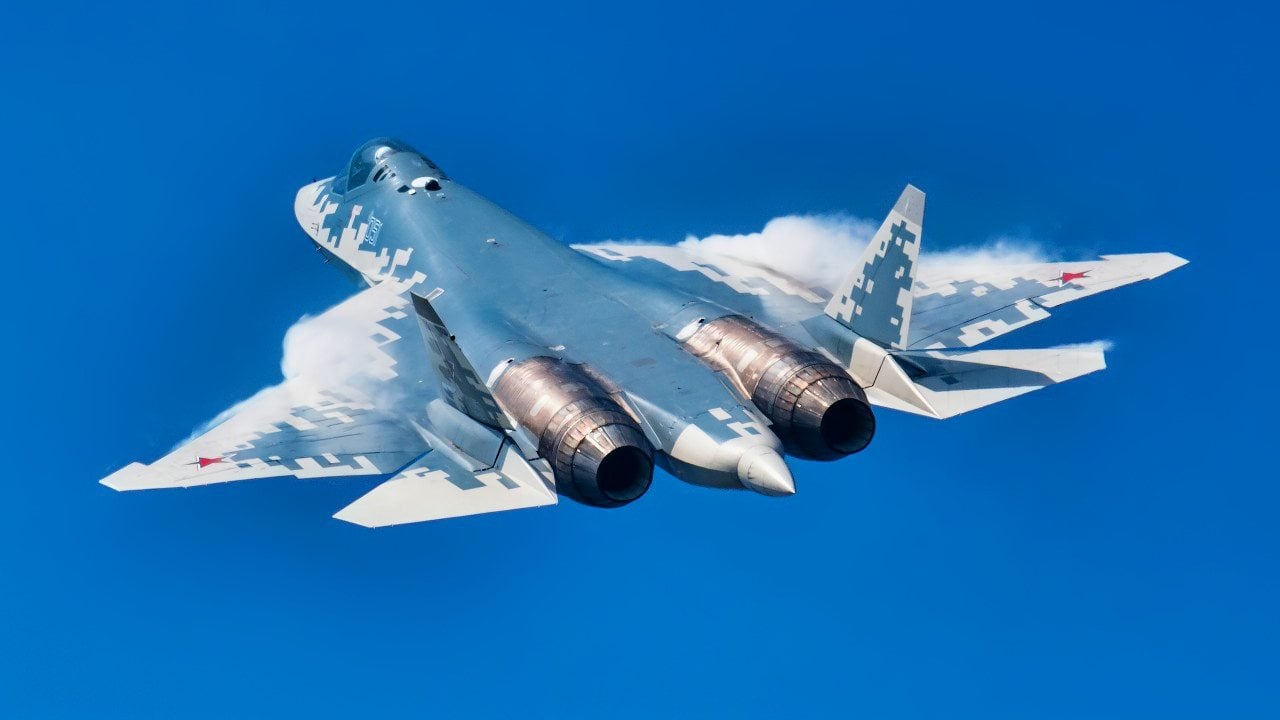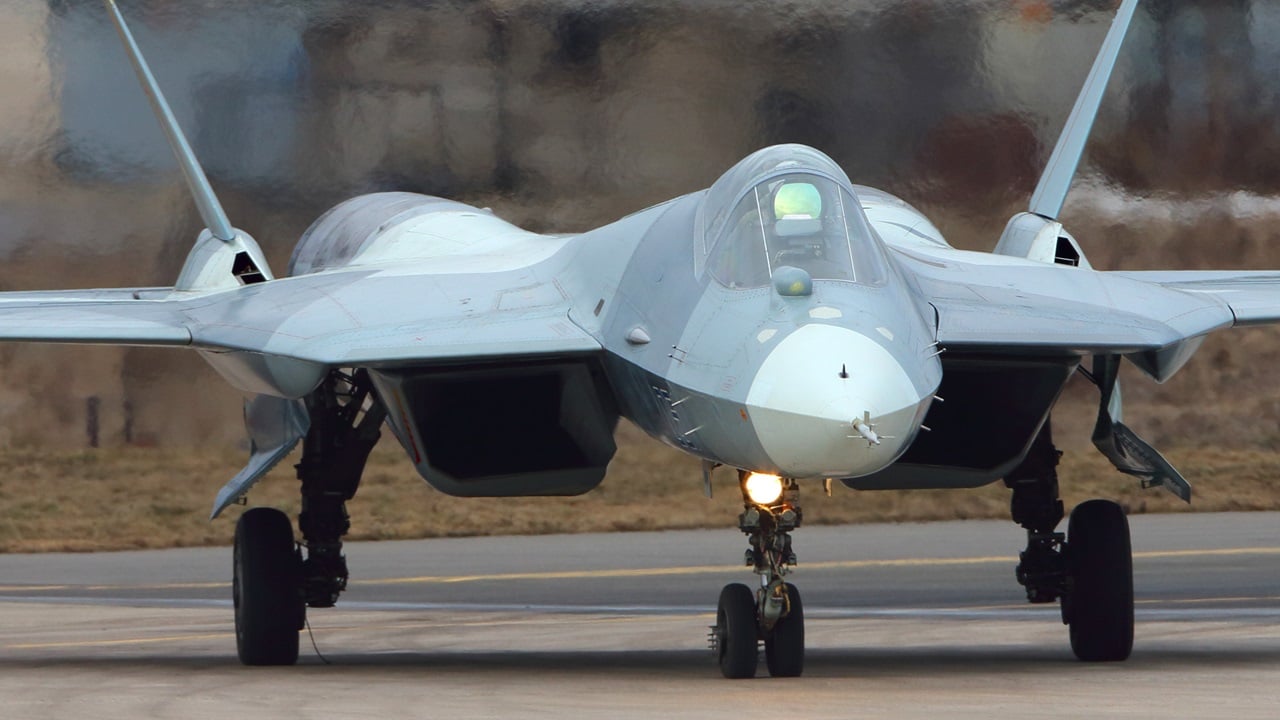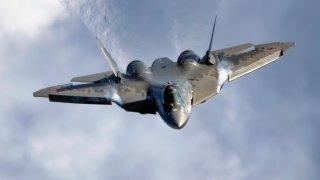No Money, No Stealth: Russia's Su-57 Fighter Nightmare Is Just Getting Started
The Russian Su-57, despite claims of being the world’s most dangerous fifth-generation fighter, lags behind its U.S. counterparts, the F-22 Raptor and F-35 Lightning II.
Summary and Key Points: The Russian Su-57, despite claims of being the world’s most dangerous fifth-generation fighter, lags behind its U.S. counterparts, the F-22 Raptor and F-35 Lightning II.

-Initially developed to replace older Soviet jets, the Su-57 faces challenges in stealth due to its design, making it more detectable.
-Additionally, Russia's limited production capacity and economic constraints hinder the expansion of its Su-57 fleet. Consequently, the Su-57 currently poses a limited threat to U.S. air superiority.
Su-57 Felon: Russia’s Overhyped Fifth-Generation Fighter
When the F-22 entered service with the U.S. Air Force nearly 20 years ago, the world’s fifth-generation aircraft gave the U.S. unmatched air superiority. Over the last two decades, however, both Beijing and Moscow have worked to expand their own fifth-generation programs.
Today, the Chinese Chengdu J-20 and Russian Su-57 threaten America’s aerial prowess. Russian officials have made headlines recently by claiming the Su-57 is the world’s most dangerous fifth-generation platform.
Considering the Kremlin’s long history of exaggerating Russia’s military capabilities, however, the Su-57’s excellence should be questioned.
Introducing the Su-57
The Soviet Union prioritized developing a next-generation fighter during the later stages of the Cold War. Engineers sought to design a multifunctional airframe capable of ground attack that would eventually replace the aging Su-27 and MiG-29.
Like many planned Soviet military systems, the drive to create a next-generation fighter slowed following the collapse of the USSR. A lack of funds delayed this program for nearly a decade. The Russian government started the PAK FA program, which India joined. New Delhi left the effort in 2018, though. Indian officials claimed the PAK FA was not producing a jet stealthy enough to compete with its counterparts.

The Su-57 (NATO reporting name Felon) is an improvement over its predecessors, but the platform simply is not as stealthy as the F-22 Raptor or F-35 Lightning II. The platform was originally fitted with a pair of Saturn/Rybinsk AL-31F1 after-burning turbofan engines able to produce a thrust rating of nearly 19,850 pounds each. Eventually, the Izdeliye 30 was incorporated, generating an even greater amount of thrust.
Each Felon is equipped with four internal weapons bays, including two small bays and two large main bays. As detailed by Popular Mechanics, each bay has the capacity to hold a range of larger air-to-air missiles, including the medium-range K-77M radar-guided air-to-air missiles, anti-radiation missiles, electro-optical guided bombs and anti-ship missiles.
In terms of speed, the Felon can reach Mach 2.0.
The Felon and Stealth: Not So Great
While these specs are impressive, the Felon’s focus on speed and agility negatively impacted its radar cross-section and infrared signatures. The Su-57’s canards are positioned ahead of the primary wings, which can enlarge its radar cross-section, making it easier for enemy systems to detect. Combined with the fighter’s less angular design, this characteristic leads experts to believe that the Felon’s stealth is compromised.

Even if the Felon did possess more stealth, Moscow’s fleet of Su-57s is so small that it would not pose a pressing threat to the U.S. in war. Since its invasion of Ukraine began more than two years ago, Russia has run low on funds and components needed to produce additional military systems and equipment. Considering its shaky output at the moment, the likelihood of more Felons entering service any time soon remains low.
About the Author: Maya Carlin
Maya Carlin, National Security Writer with The National Interest, is an analyst with the Center for Security Policy and a former Anna Sobol Levy Fellow at IDC Herzliya in Israel. She has by-lines in many publications, including The National Interest, Jerusalem Post, and Times of Israel. You can follow her on Twitter: @MayaCarlin. Email the author: [email protected].
All images are Creative Commons or Shutterstock.
From the Vault
Russia Freaked Out: Why the U.S. Navy 'Unretired' the Iowa-Class Battleships
Battleship vs. Battlecruiser: Iowa-Class vs. Russia's Kirov-Class (Who Wins?)


